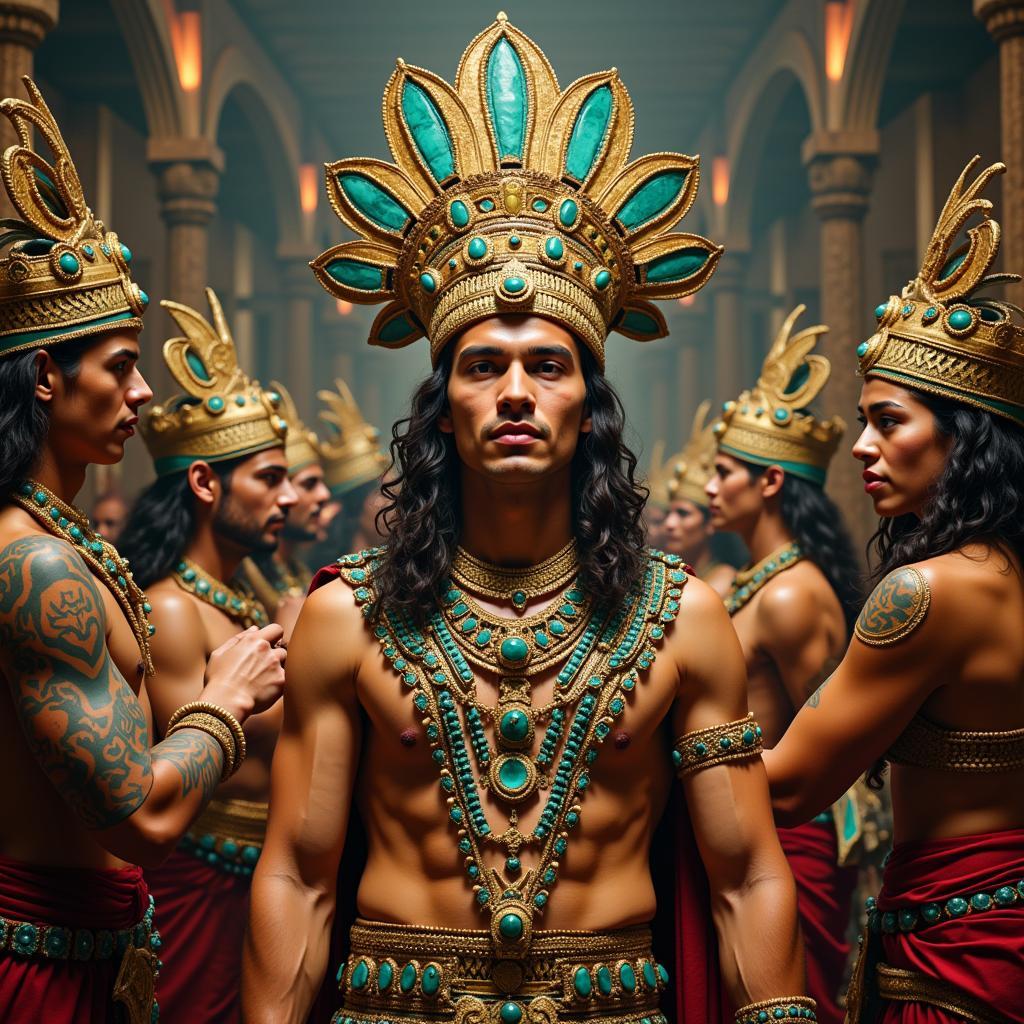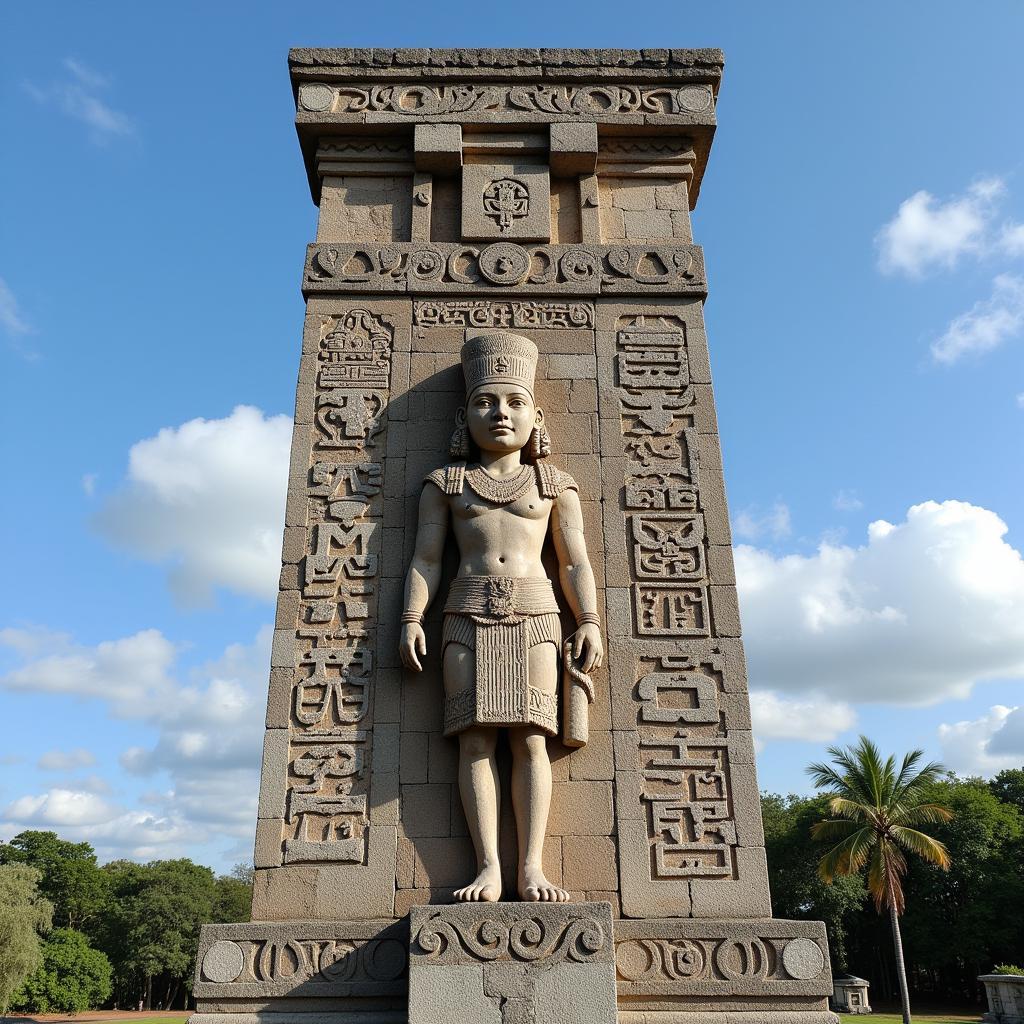The intricate workings of ancient Mayan civilization continue to captivate us today. One aspect that sparks particular intrigue is understanding how power transitioned within their sophisticated societal structure. Unlike many ancient cultures ruled by hereditary succession alone, the Mayan system was more nuanced, weaving together elements of lineage, divine mandate, and military prowess.
Unraveling the Threads of Power: Lineage, Divinity, and Might
At the heart of Mayan leadership was the Ajaw, often translated as “king” or “lord,” who held significant political and religious authority. While descent from a royal lineage played a crucial role, it wasn’t a guaranteed ticket to power. The Mayans believed rulers were divinely appointed, chosen by the gods to act as intermediaries between the earthly and celestial realms. This divine selection manifested through a series of rituals and ceremonies, solidifying the Ajaw’s legitimacy in the eyes of the people.
 Coronation of a Mayan King
Coronation of a Mayan King
However, lineage and divine favor weren’t enough. An Ajaw also needed to prove their capabilities as a warrior and leader. Military successes in expanding territories, securing trade routes, or defending against rivals significantly enhanced their standing and influence.
Beyond the Throne: Councils and the Power of Elite Families
The Mayan political landscape wasn’t solely dominated by the Ajaw. A council of nobles, often members of powerful extended families, played a critical role in governance. These individuals held significant sway, advising the Ajaw, influencing decisions, and at times, even challenging their authority.
The transfer of power was often a complex negotiation within this elite circle. While sons or chosen heirs of the previous Ajaw were favored, other factors such as military achievements, alliances forged through strategic marriages, and even economic prowess could tip the scales in favor of another contender.
A Legacy Etched in Stone: Deciphering the Clues
Our understanding of Mayan power dynamics comes from a combination of archaeological discoveries, such as intricately carved monuments and stelae, and the decipherment of their hieroglyphic writing system. These sources provide glimpses into the lives and deeds of Mayan rulers, revealing instances of peaceful transitions, power struggles, and even outright usurpations.
 Mayan Stelae Depicting Rulers
Mayan Stelae Depicting Rulers
The study of Mayan power structures highlights the complex interplay of factors that determined leadership within their civilization. It wasn’t simply a matter of birthright but a tapestry woven from lineage, divine approval, military achievements, and political acumen. Their legacy continues to remind us that power is rarely absolute and often resides in a delicate balance shaped by societal beliefs, individual capabilities, and the ever-shifting tides of history.
Need help understanding more about ancient civilizations and their impact on our world today? Contact us!
Phone: 02043854663
Email: [email protected]
Address: Khu 34, Bac Giang, 260000, Viet Nam
Our dedicated team is available 24/7 to assist you.